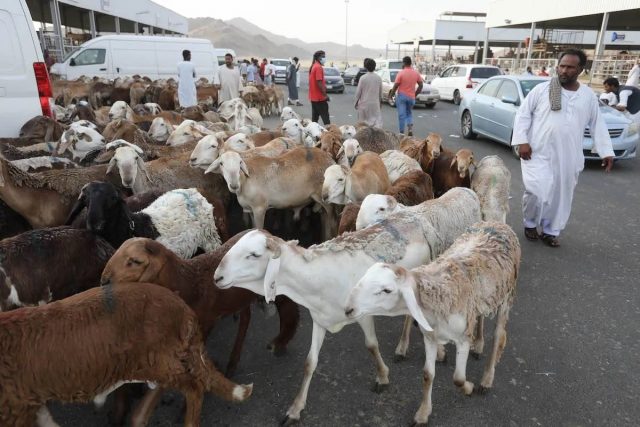Hundreds of thousands of white-robed pilgrims gathered on Wednesday for the 'stoning of the devil' symbolic Hajj ritual in Saudi Arabia as Islam’s pilgrimage draws to a close.
From dawn, hundreds of thousands of worshippers began pelting pebbles at three concrete monoliths representing Satan, the last major ritual of an event held in severe summer heat.
The pilgrims flocked to Mina, near the holy city of Mecca, a day after enduring temperatures of 48 degrees Celsius (118 degrees Fahrenheit) as they prayed for hours on Mount Arafat.
More than 1.8 million pilgrims, most of them from abroad, joined the first Hajj with unrestricted numbers since pre-Covid in 2019, when 2.5 million took part.
The attendance figure was announced by Saudi officials on Tuesday.
The devil-stoning marks the start of the three-day Eid al-Adha (Feast of Sacrifice) holiday, celebrated by Muslims by buying and slaughtering livestock to commemorate Abraham's willingness to sacrifice his son.The pilgrims reach Mina, praise be to Allah.#Proclaim_to_the_People #In_Peace_and_Security#Makkah_and_Madinah_Eagerly_Await_You pic.twitter.com/xdA5ZaVsXP
— Ministry of Hajj and Umrah (@MoHU_En) June 28, 2023
Afterwards, the pilgrims return to Mecca to perform a farewell 'tawaf' walking seven times around the holy Kaaba, the giant black cube at the Grand Mosque that is the focal point of Islam.
On Wednesday, helicopters buzzed overhead and hundreds of police officers fanned out across Mina's roads to organize the flow of worshippers.
As well as the crowds, scorching conditions have been a major challenge for the worshippers from 160 countries, including many elderly after a maximum age limit was scrapped.
In recent years the Hajj has coincided with the Saudi summer, compounded by global warming that has made the desert climate even hotter.
Tuesday's peak of 48 degrees Celsius made it the hottest day at this year's Hajj.
To protect themselves from the heat, many pilgrims walk with umbrellas to shield themselves from the sun, while others carry their folded prayer blankets above their heads.The Hujjaj arrived at #Arafat, showered with mercy….
#Hajj 2023 🕋 pic.twitter.com/GG2C2DVm6a
— 𝗛𝗮𝗿𝗮𝗺𝗮𝗶𝗻 (@HaramainInfo) June 27, 2023
More than 32,000 health workers have been on hand to treat anyone struck by heatstroke or other ailments, authorities said, while bottles of water are being distributed free of charge.
The hajj started on Sunday at Mecca’s Grand Mosque, Islam's holiest site, before an overnight stay in tents and then the prayers on Mount Arafat, where the Prophet Mohammed delivered his final sermon.
Origins of Eid Al-Adha Islamic narrative has it that Prophet Ibrahim, or Abraham, the forefather of the monotheistic religions of Islam, Christianity and Judaism, received through his dreams a commandment from God to sacrifice his son Ismail, or Ishmael.
Ibrahim and Ismail submitted to the will of God and were ready for the sacrifice as an act of faith and obedience.
The devil – known as 'Iblis' in Islam – tried to dissuade Ibrahim from following the order and the Prophet threw stones at him to chase him away.

Seeing Ibrahim and Ismail's obedience, God sent down a lamb from the heavens for the sacrifice, according to Islamic tradition.
A similar version of the story is also mentioned in Christianity and Judaism.
Muslims around the world celebrate Eid Al-Adha to honor the devotion of Ibrahim and Ismail.
The symbolic sacrifice of livestock is part of the rituals associated with the festival, but is not an obligation in Islam, rather an act that is encouraged.

